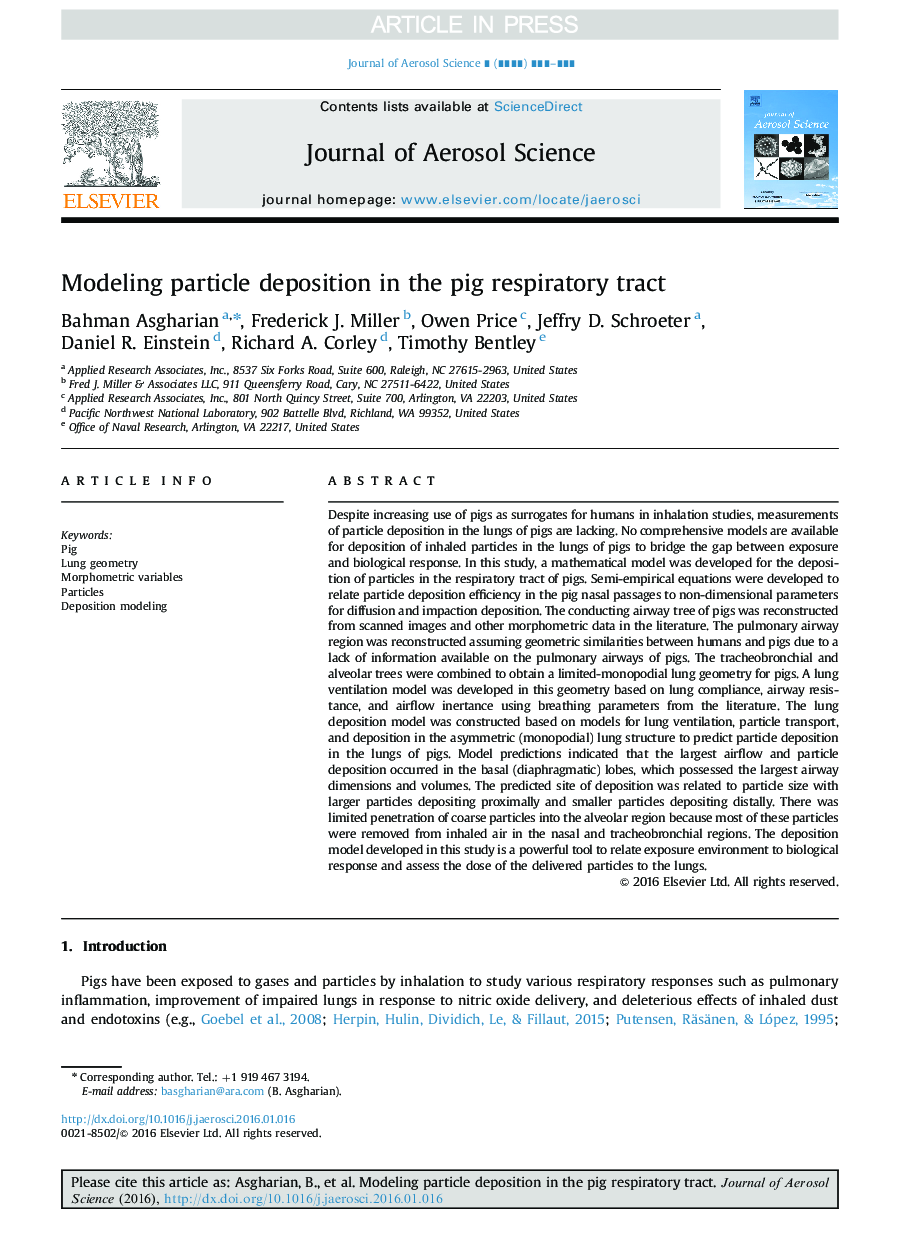| Article ID | Journal | Published Year | Pages | File Type |
|---|---|---|---|---|
| 6344342 | Journal of Aerosol Science | 2016 | 18 Pages |
Abstract
Despite increasing use of pigs as surrogates for humans in inhalation studies, measurements of particle deposition in the lungs of pigs are lacking. No comprehensive models are available for deposition of inhaled particles in the lungs of pigs to bridge the gap between exposure and biological response. In this study, a mathematical model was developed for the deposition of particles in the respiratory tract of pigs. Semi-empirical equations were developed to relate particle deposition efficiency in the pig nasal passages to non-dimensional parameters for diffusion and impaction deposition. The conducting airway tree of pigs was reconstructed from scanned images and other morphometric data in the literature. The pulmonary airway region was reconstructed assuming geometric similarities between humans and pigs due to a lack of information available on the pulmonary airways of pigs. The tracheobronchial and alveolar trees were combined to obtain a limited-monopodial lung geometry for pigs. A lung ventilation model was developed in this geometry based on lung compliance, airway resistance, and airflow inertance using breathing parameters from the literature. The lung deposition model was constructed based on models for lung ventilation, particle transport, and deposition in the asymmetric (monopodial) lung structure to predict particle deposition in the lungs of pigs. Model predictions indicated that the largest airflow and particle deposition occurred in the basal (diaphragmatic) lobes, which possessed the largest airway dimensions and volumes. The predicted site of deposition was related to particle size with larger particles depositing proximally and smaller particles depositing distally. There was limited penetration of coarse particles into the alveolar region because most of these particles were removed from inhaled air in the nasal and tracheobronchial regions. The deposition model developed in this study is a powerful tool to relate exposure environment to biological response and assess the dose of the delivered particles to the lungs.
Related Topics
Physical Sciences and Engineering
Earth and Planetary Sciences
Atmospheric Science
Authors
Bahman Asgharian, Frederick J. Miller, Owen Price, Jeffry D. Schroeter, Daniel R. Einstein, Richard A. Corley, Timothy Bentley,
